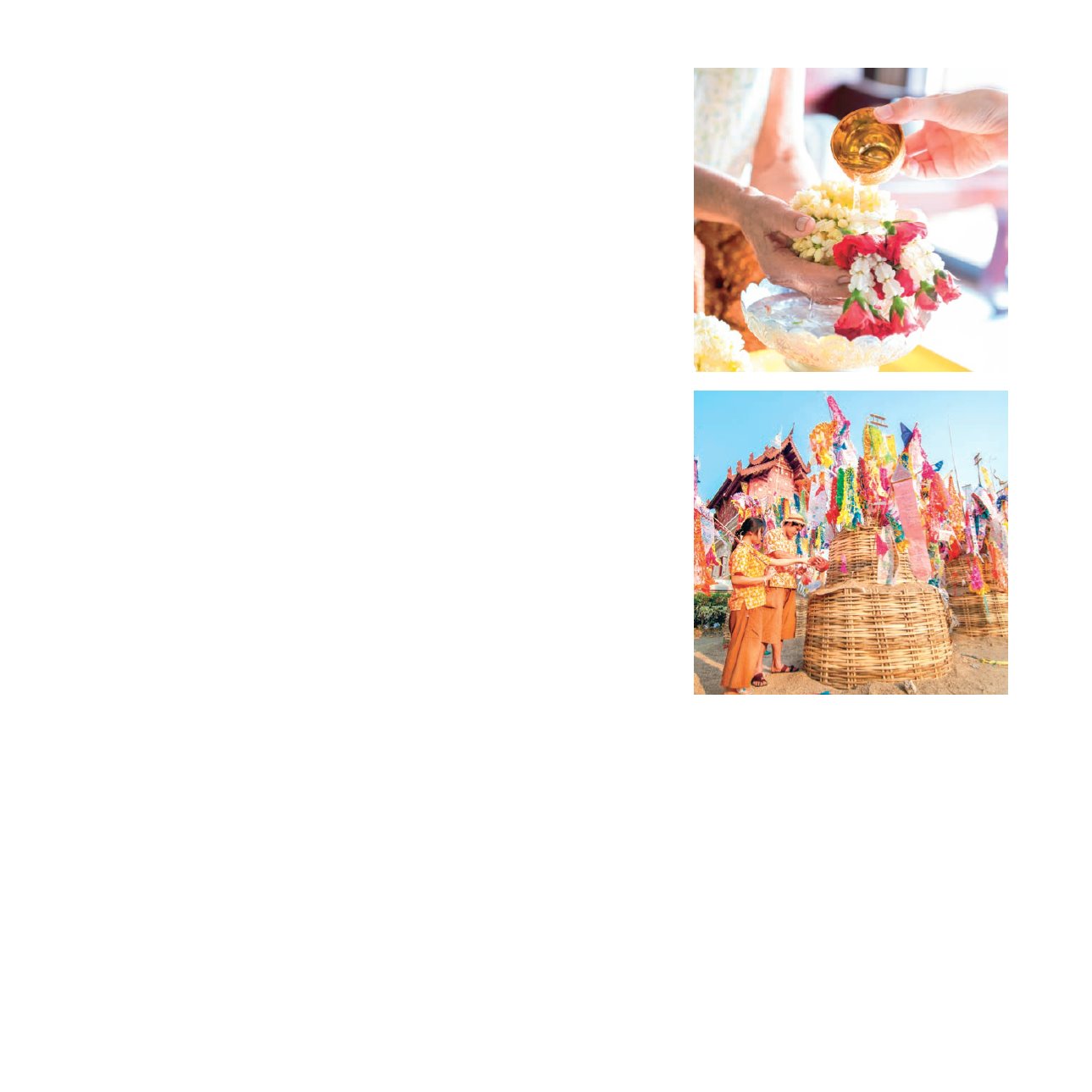

Precious Traditions and Ways of Life
|
27
Songkran
The Thai New Year
The moment of life in transition to a new year is important for people to be
aware and reminisce of the past. The Songkran tradition, in parallel to Thai New
Year tradition, shows the culture and lifestyle of people in the society in association
with Buddhism and reverence towards their parents and ancestors.
Thai tradition of making a smooth transition from the old year to the new
one is based on the beliefs in eliminating bad things from life and replacing with
new auspicious things, as the meaning of
“Songkran”
in Sanskrit is stepping up or
moving into. This refers to the passage of the sun, from one zodiac sign to another
sign every month from one sphere to the next until completing a cycle, or from
Pisces to Aries, which is counted one year according to the solar year. Therefore,
the new year is celebrated for 3 days: the 13
th
of April is set as the Songkran day;
the 14
th
of April is called
“Wan Nao”
(literally
“the day of living”
in Lanna), which
is the day of bridging the old year and the new one; and the 15
th
of April is called
the beginning of New Year’s Day. The traditional Songkran festival according to the
lunar year is on the 15
th
day of the fourth month.
The preparation to the New Year starts with cleaning houses, things, places
including temples which are considered as public space. People begin their new day by
making merit or offering food to monks at temples in the morning, and participating in
bathing rites to monks and Buddha images in order to sustain and nurture Buddhism.
The activities also soften their minds to make a sacrifice without expectation. Forming
sand pagodas is another form of making merit and solidarity at the same time because
the sand can be further used in construction or land filling.
“
Songkran is a tradition of
summer, therefore “water”
is used as a symbol to
relieve the heat of weather
by splashing water on each
other for moisture and asking
the elderly family members’
blessings for auspiciousness
and prosperity.
”


















